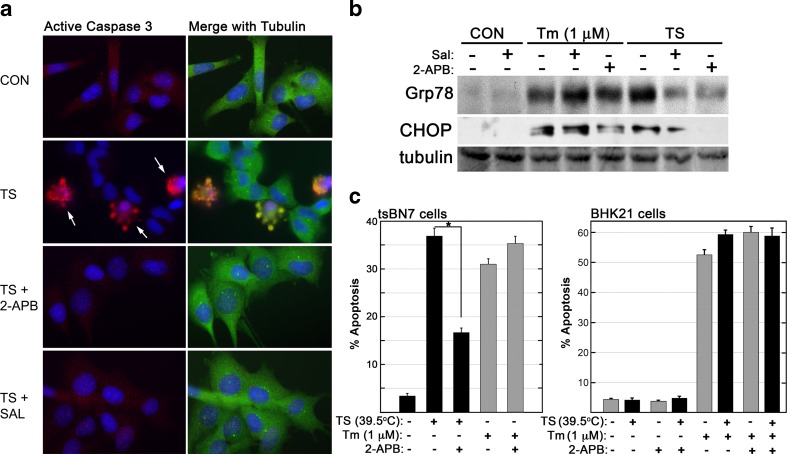Fig. 1.
Distinct apoptotic responses by cells experiencing deficient N-linked glycosylation. a tsBN7 cells exposed to TS (39.5 °C, 36 h) exhibit activation of apoptosis as shown by detection of active caspase-3 via immunocytochemistry. Cells were evaluated with rabbit anti-active caspase-3 and mouse anti-tubulin. Levels of apoptosis were diminished with the addition of known inhibitors of ER stress signaling: 2-APB (50 μM) or salubrinal (10 μM). b Immunoblot of proteins isolated from tsBN7 cells treated with TS or tunicamycin (Tm, 1 μM) for 24 h. Inhibitors of ER stress signaling were sufficient to block TS-induced increases in expression of UPR target Grp78 and CHOP. Immunoblot data is representative of at least three independently replicated experiments. c tsBN7 and BHK21 cells were exposed to TS or Tm (1 μM) for 36 h and then fixed. Nuclei were stained with DAPI, mounted, and scored for percentage of cells exhibiting apoptotic nuclear morphology. In tsBN7 cells, TS but not Tm exhibited an apoptotic signal that could be inhibited by ITPR inhibition with 2-APB (50 μM). BHK21 cells treated with Tm (1 μM) displayed apoptosis induction regardless of the presence/absence of 2-APB. Statistical analysis was via Student’s t test (p < 0.05)

